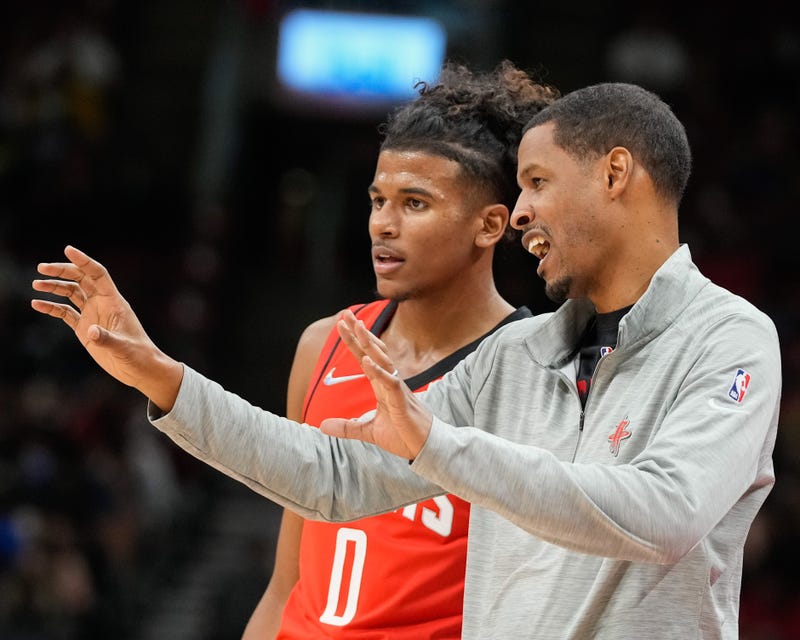
HOUSTON (SportsRadio 610)- Late in the third quarter of the Rockets 113-100 loss to the Los Angeles Clippers on Tuesday night, Jalen Green initiated the Rockets offense by bringing the ball up the right side of the floor. He pitched the ball to Alperen Sengun standing at the top of the three-point arc, came back left, got the ball back from Sengun, who screened Green's defender, Amir Coffey. Without hesitation Green took two dribbles, pulled up and drained an 18-foot jumper.
What may have looked like an ordinary basket in a somewhat meaningless NBA game towards the end of a long season to those watching was much more for Green. It was the culmination of hours and hours of hard work.
“Two games before that he had one where they went under (a screen), he shot the three,” Rockets head coach Stephen Silas recalled Wednesday. “Then he hit again and he went downhill and finished.”
These actions may look and sound simple, but the ability to execute them at a high-level is a meticulous process, it doesn’t just happen.
“All that stuff is done during his individual workouts and his pregame stuff,” Silas said. “It's the repetition in that, that allows him to do it during the games.”
There is what you see over the course of a 48-minute basketball game, but then there's the work put in when the arena is empty, and for Green and the rest of the baby Rockets that time matters just as much, if not more.
Player development is a long, arduous slog, and the Rockets philosophy under Silas, lead assistant John Lucas, and Director of Player Development Robbie Keck is to introduce new concepts gradually and avoid throwing lobbing too much at a player all at once.
“Especially during the season, you kind of try to tailor it to things that either they can pick up quickly, or things that they're already doing, and that they can improve on,” Silas said.
“If a guy is a poor ball handler, you don't want him trying a new dribble move in the middle of the game that you're working on individually or before practice.”
Silas says the real improvement for his young players will come during the summer when there are no games to play, teams to prepare for, or flights to catch, so 100 percent of a guy’s time on the court can be devoted to growing as a player.
“That kind of development comes offseason, so that they can fail and tinker and figure it out and then apply, as opposed to during the season. We don't want too much experimentation during the games.”
Green has started every game he’s played this season, while two other rookies, Josh Christopher and Alperen Sengun, have forced their way into Silas’ rotation. All three players are better today than when the season started and have seen their roles and responsibilities increase, but it’s been done incrementally as to not overwhelm them with tasks they simply aren’t ready for at this stage of their careers.
“You want guys to be confident with what they're doing on the floor, and helping them with their strengths and tailoring their strengths in a way where they can be successful on the floor breeds success,” Silas explained. “Whereas, if they're doing something that they're not quite comfortable with, (that) doesn't necessarily breed the same success to me.”
